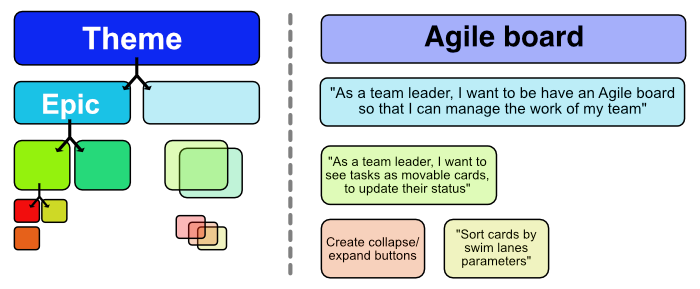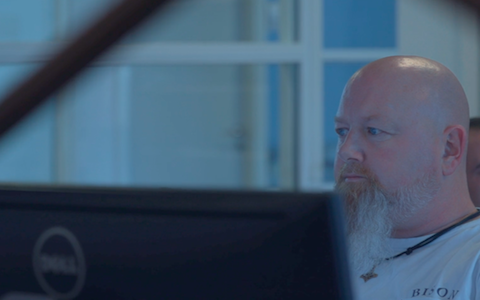Epics, Stories, Tasks, Themes, and Initiatives - those Agile concepts help to organize work in a simple manner. Let's see how to configure them in Redmine. .
Let's start with a pill of a theory for those who are new to this topic.

Themes
A collection of stories by category. Like a jar for cookies, it's a container of stories. By its nature, an epic can also be a theme in itself. They should refer to a business goal.
An example of a theme: “Agile Board”.
Epics
An epic is a larger story. A requirement that is too big to deliver in a single sprint and need to be broken into smaller deliverables (stories). Epics are progressively broken into a set of smaller user stories at the appropriate time.
An example epic: “As a team leader, I want to be have an agile SCRUM board so that I can easily manage the work of my team".
Migrate to secure hosting
Don't waste your time on Redmine maintenance. Hire experts and focus on your projects
Stories
Often referred to as Product Backlog Item or Work Item.
A story is an individual feature or business requirement that is deliverable (finished) within a single sprint. A story should follow an INVEST acronym (see definition here). Story it doesn't have to contain all the information the team needs to complete the job. Stories are often written in a specific format:
As a ... [end user /certain role] I want to ... [what the user wants to do once the feature is delivered] So that ... [why they want the feature / the benefit it brings]
Sometimes teams start with the reverse order and put the “So that …” at the beginning.
An example user story: “As a team leader, I want to be able to see tasks as cards on an agile SCRUM board so that I can easily see who's working on what".
Tasks
The elements that build up for a story. Tasks often follow the SMART acronym: specific, measurable, achievable, relevant, time-boxed (although what the letters stand for seems to be hotly debated). Some teams don't divide their stories into tasks, as they prefer to work vertically. Splitting stories into tasks encourages teams to split work horizontally.
An example of a task: “Create collapse/expand buttons”.
Manage Epics and User Stories in Redmine
We will use a Redmine issue structure for this purpose and support our efforts with trackers.
Epic is created firsts as an initial, parent Issue. Then create a User Stories as sub-Issues (child-issues). Each User Stories can be further divided into Tasks (grand-child issues). For a clearer organization of work you can create supporting trackers: Epic, User Stories, and Tasks and add Issues on each level to the respective ones.

